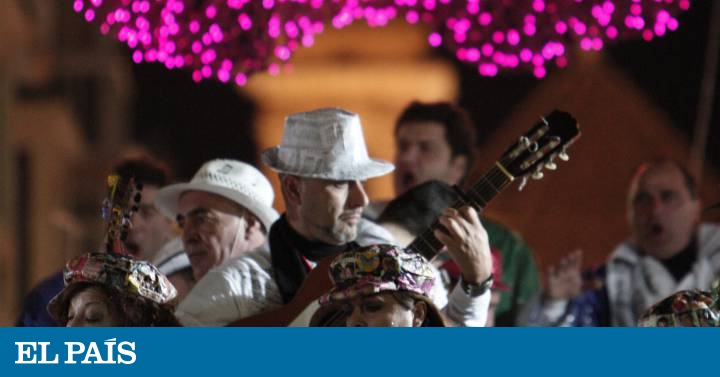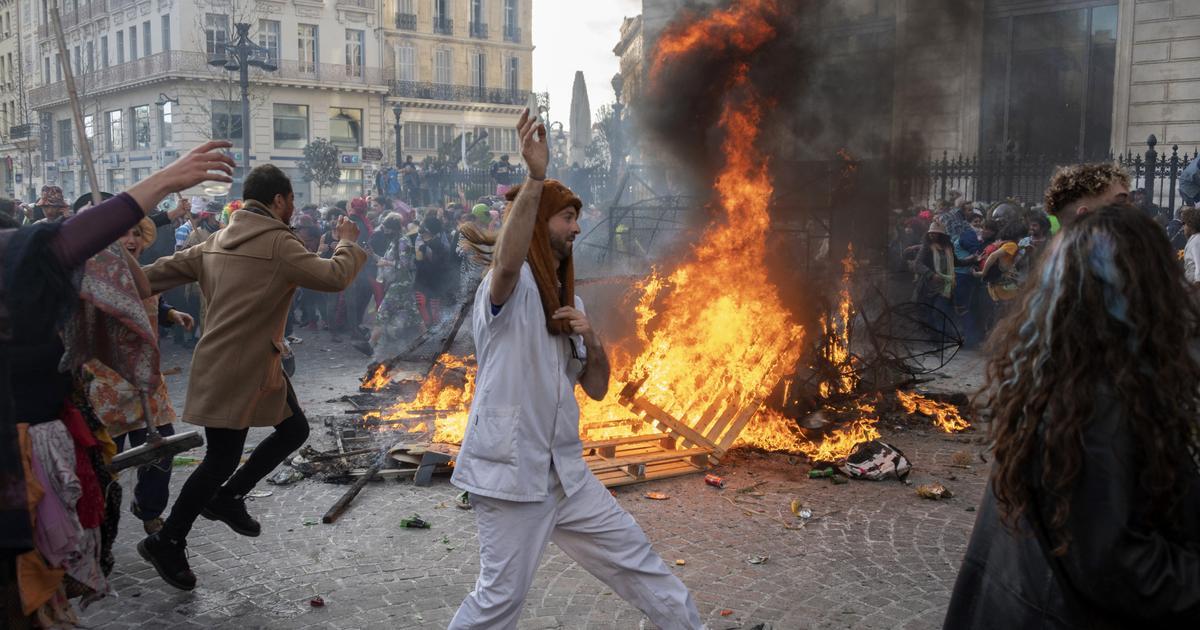A worldly crossroads, the sacred door of a baroque church. The colossal cover of an 18th century mansion; A shabby and simple house door. Any corner is likely to become the forge of a show as fun, transgressive and free as the Carnival of Cádiz. There is no month of February in which he does not disguise any square of the Andalusian city in an intensely lived place, but this year will be the first in which he will perform his cheerful ritual as a festival declared of cultural interest (BIC).
From February 20 to March 1 (official dates) it is time to check that there are corners of Cádiz so inextricably linked to Carnival that they are already “cultural spaces inherent to the party”. Neighborhoods, squares and streets that have become protected as spaces where choirs, chirigotas, quartets, troupes and romance are cited - without exact time or clear call - with an audience eager to devour humor. This is the definitive route of the Cádiz Carnival .
Gran Teatro Falla and its square
Fans define the “Teatro del Carnaval” or “house of the red bricks” as the Gran Teatro Falla, a beautiful Neomudéjar building from 1905. The main scenographic space of Cádiz hosts the Official Carnival Group Contest , in which this year they battle almost 160 candidates in the modalities of choirs, chirigotas, comparsas and quartets . From the outside stands out its front brick cover and horseshoe arches. From the interior, the armchair patio and its paradise painted on the ceiling. However, when the party officially kicks off, life in the theater spreads into the street. Fragela Square , where it is located, is a reference place for groups that use the stairs of the Faculty of Medicine as a stage.
San Antonio Square
In a historic center of straight and narrow streets, the Plaza de San Antonio, in which the newly proclaimed Spanish Constitution was read on March 19, 1812, has been opening for centuries as a public place of recreation. In Carnival it is no exception. Since the mid-nineteenth century there are documented decorations and celebrations for the party. Today is a must for the proclamation - which will be delivered by singer David Palomar on February 22 - and to enjoy concerts and gastronomic tastings, such as Ostioná . Nearby is the Oratory of San Felipe, a 17th-century elliptical plant and house of that first Magna Carta, whose cover is the place chosen by many groups to sing.
La Viña neighborhood
Around the Central Market, in the Plaza de la Libertad, the iconic Carousel of Choirs is celebrated
It is no accident that the epicenter of Carnival coincides with La Viña , a neighborhood of popular houses southwest of the historic center that owes its name to the strains that populated the area in the eighteenth century. The Plaza del Corralón de los Carros and the street of the Virgen de la Palma host official celebrations, such as street tablaos for carnival performances, choir carousels and free gastronomic tastings. But the devil hides in the details. Keep an eye on their hallways and corners away during the night - Plaza de los Capuchinos or Abreu - where the illegal groups are mentioned, those who go out to sing along the street but do not participate in the official contest. La Viña is a place for good tapas, like the famous Casa Manteca greaves and shrimp tortillas from El Faro.
Pópulo neighborhood
Javier Benítez has been going out in street groups for 30 years. This year his romance will be called Las Greta de la Caleta . “The street is everything, freshness and improvisation, but with the unwritten norm of respect and good vibes,” says this cultural animator and manager of the store You Are Here (José del Toro, 12). He frequents the Pópulo neighborhood, a monumental and recollection of narrow streets and buildings such as the palace of the House of the Admiral (from the 17th century) or the church of Santa Cruz (from the 13th), which constitutes the medieval core of Cádiz and has became BIC carnival thanks to the presence of illegal . The overcrowding has caused these groups to seek refuge in nearby places, such as the front page of the House of Chains (17th building), Ruiz de Bustamante street or Plaza de las Canastas.
Central Market
The succession of Doric open-air columns gives it the appearance of a Roman forum, but the Central Market is really neoclassical. Around it, in the Plaza de la Libertad, the most iconic Carnival event is held: the Carousel of Choirs (first and second Sunday of Carnival at noon). This is the most mythical area for choirs, but Cádiz celebrates other carousels during noon and evenings in other locations, such as Plaza de la Mina or Candelaria. The 45 components (maximum) of each grouping are raised in trays - mobile structures pulled by tractors - to sing while moving through the square. Nearby is the Plaza de Topete or de las Flores, presided over by the Post Office building, whose staircase is also an improvised auditorium. Or the palace of the Marquises of Recaño (18th century), future museum of the party and another of the excellent illegal forms.
Candelaria Square
Many squares of the city arose after the confiscation of Mendizábal, in 1836. The one of the Candelaria, near the cathedral, is one of them. The contemplation of the hamlet that surrounds it is a good example of the residential architecture of Cádiz in the 18th century. Carnival is also present here, in a "mixture of tangible and material heritage with the intangible," as defined by Benítez. In La Candelaria, the La Estrella Peña Cultural Center, from the mid-20th century, is in charge of setting up a tablao for carnival performances and organizing one of the free gastronomic tastings that abound at the party. Here is also the Café Royalty restaurant, a refined 1912 restaurant where you can enjoy tapas, elaborate dishes and other sweet options.
Mine Square
Among gardens of the nineteenth century, Carnival is felt in the Plaza de la Mina with choir carousels. It is a meeting point for families, and the nearby Zorrilla street offers tapas options, such as the restaurant Cumbres Mayores or el Balandro. And again another carnival reuse: the steps of the Provincial Museum serve both access to the Cadiz archaeological splendor - chooses Phoenician and Roman pieces - and for the performance of an illegal group.
Find inspiration for your next trips on our Facebook and Twitter and Instragram or subscribe here to the El Viajero Newsletter.



/cloudfront-eu-central-1.images.arcpublishing.com/prisa/HIMSYQJBH5G75DVSW5XOTPP4UY.JPG)


/cloudfront-eu-central-1.images.arcpublishing.com/prisa/LICFOABLMFBFZJ5EDBCNVTC35U.jpg)


/cloudfront-eu-central-1.images.arcpublishing.com/prisa/RGXZZ7HKWRCKLCNNNFDNLABHZI.jpg)